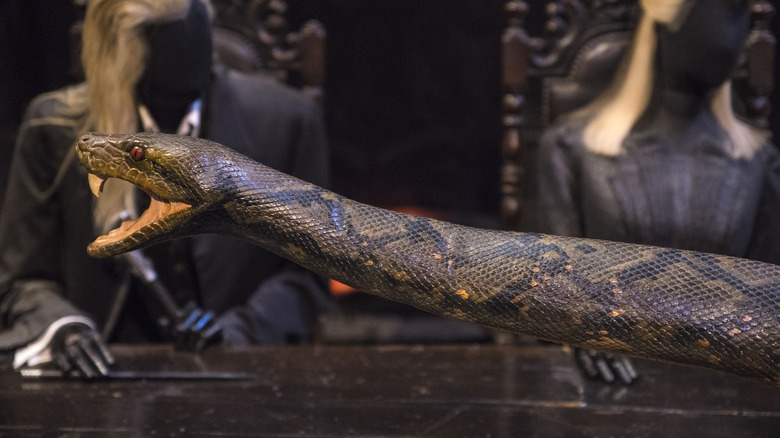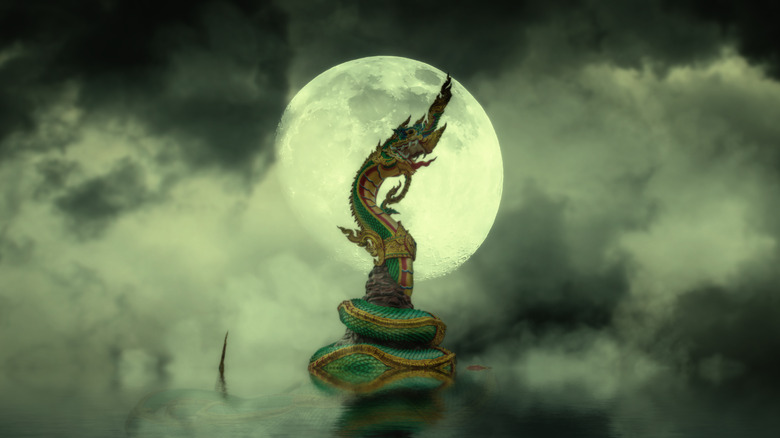The South Asian Legend That Inspired Nagini In Harry Potter
Nagini, the snake of "Harry Potter" villain Lord Voldemort, received more attention — and controversy — in the prequel film series "Fantastic Beasts" when she was portrayed as a human (via Insider). Nagini was always seen by Voldemort's side in the books and films, occasionally attacking and poisoning the Dark Lord's enemies like Ron Weasley's father. Nagini is also one of Voldemort's Horcruxes and has been shown to be remarkably intelligent for an animal. In "The Crimes of Grindelwald," Nagini is shown to have once been human, played by Korean actress Claudia Kim.
Author J.K. Rowling claims that Nagini was always meant to have been human, and that hints were dropped with her intelligence and, most importantly, her name, referencing the South Asian myth of the Naga, a race of human-cobra hybrids. Some critics questioned the inclusion of an Asian character, in a series known for its lack of diversity, as a character that becomes a monster — but Rowling points to the Naga mythos as the reasoning for the casting (even if the myth was centered around India, Thailand, and Indonesia, not Korea).
The Naga are treasure-guarding demigods
Naga is the Sanskrit word for "serpent," and mythology surrounding these mythical beings are prevalent in Hinduism, Buddhism, and Jainism (via Britannica). These strong, semi-divine beings are able to change their form to be completely human or completely serpentine, and though they can be dangerous to humans, they are more often helpful beasts. The Naga have their own underground kingdom, known as Naga-loka or Patala-loka, said to be filled with beautiful, gem-decorated palaces.
Legend has it that the Naga were sent underground by the creator god Brahma once they were too populous on the surface, and instructed to only bite the evil or those destined to die young. They are often associated with bodies of water and are known to guard treasure. Female Naga, which are sometimes referred to as Naginis like Voldemort's beloved serpent, were said to be strikingly beautiful. Rowling's claims that Nagini was meant to be human from the beginning can't be fully proven or discounted, but it's clear that the inspiration for the name holds a deep meaning for Southern Asian cultures and religions.

